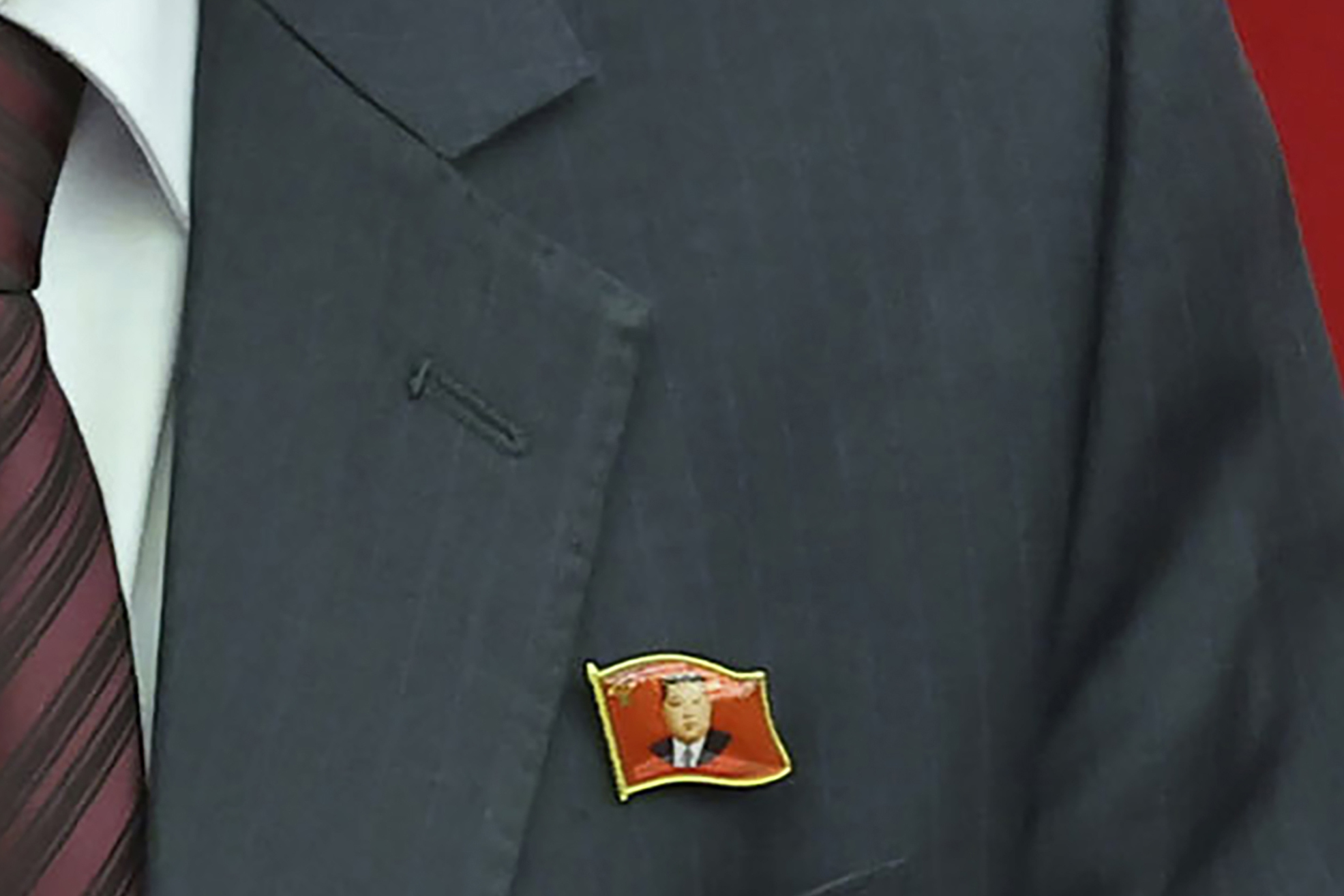North Koreans seen wearing Kim Jong Un pins as his personality cult grows

This photo provided Monday, July 1, 2024, by the North Korean government shows that a senior official wears lapel pins with the image of Kim Jong Un during a ruling party’s meeting in Pyongyang Sunday, June 30, 2024. Independent journalists were not given access to cover the event depicted in this image distributed by the North Korean government. The content of this image is as provided and cannot be independently verified. Associated Press
SEOUL, South Korea — For the first time, North Korean officials have been seen wearing lapel pins with the image of leader Kim Jong Un, another sign the North is boosting his personality cult to the level bestowed on his late dictator father and grandfather.
North Koreans are required to wear pins over their hearts which for decades bore images of either the country’s founder, Kim Il Sung, or his son Kim Jong Il, or both. The existence of pins dedicated to Kim Jong Un had not been verified until state media published photos on Sunday showing officials wearing his pins at a ruling Workers’ Party meeting.
The pins are part of a state-sponsored mythology surrounding the Kim family which treats Kim Il Sung and Kim Jong Il like gods. They are memorialized with numerous statues across North Korea, their birthdays are two of the country’s main holidays and their portraits are hung in all homes and offices.
READ: Twitter-less North Korea crafts new cult of Kim
Few question current leader Kim Jong Un’s hold on power, but few images honoring the 40-year-old have been displayed in public since he took power in late 2011 upon his father’s death. Recently, however, he has begun taking steps to boost his own personality cult while also trying to further move out of the shadow of his father’s and grandfather’s legacies.
Article continues after this advertisementIn May, his portrait was publicly displayed along with those of the two other Kims for the first time at a Workers’ Party-run training school. In January, Kim announced he will no longer pursue peaceful unification with South Korea, a decadeslong policy cherished by his father and grandfather. Observers also say North Korea appears to be refraining from using terms like “the Day of Sun,” a reference to the April 15 birthday of Kim Il Sung.
Article continues after this advertisementREAD: Only 1 N. Korean can have name of Kim Jong Un
“The latest series of efforts to idolize Kim Jong Un is assessed as a move to dilute his predecessors while establishing his authority as a leader” different from them, Kim Inae, a deputy spokesperson for South Korea’s Unification Ministry, told reporters Monday.
She said Kim is also likely trying to boost internal solidary behind his leadership as he grapples with economic hardships and the influence of South Korean pop culture.
Ahn Kyung-su, head of dprkhealth.org, a website focusing on health issues in North Korea, said Kim Jong Un is trying to phase out the symbols representing the legacies of his predecessors to promote his own era. But as the third-generation leader in the Kim family, he will find it difficult to push too far because that would weaken the legitimacy of its dynastic rule, said Ahn, who has interviewed many North Korean defectors and closely monitors North Korean state media.
“Kim Jong Un is in a dilemma. He wants to stay away from his father’s and grandfather’s legacies more but he can’t do so,” Ahn said.
He said North Koreans are now expected to wear Kim Jong Un pins.
Leif-Eric Easley, professor of international studies at Ewha Womans University in Seoul, said the wearing of Kim Jong Un pins isn’t surprising, given that he has been consolidating his rule for over a decade.
“The question is, now that Kim has stepped out from the shadow of his predecessors, whether he will undertake policy adjustments to break with North Korea’s past economic failures,” Easley said.
In recent years, North Korea’s fragile economy has suffered further setbacks because of strict pandemic restrictions, persistent U.N. sanctions and its own mismanagement. During a Workers’ Party meeting on Saturday, Kim spoke about “some deviations obstructing” efforts to improve the country’s economic status, according to state media.
Some experts say Kim’s moves are also related to his reported push to make his preteen daughter his heir in another hereditary power transfer.
South Korea’s spy agency said in January that it sees Kim’s daughter, reportedly named Ju Ae and aged about 11, as her father’s likely heir apparent. But some analysts say it’s still too early to call her Kim’s successor, citing her age and North Korea’s male-dominated hierarchy.